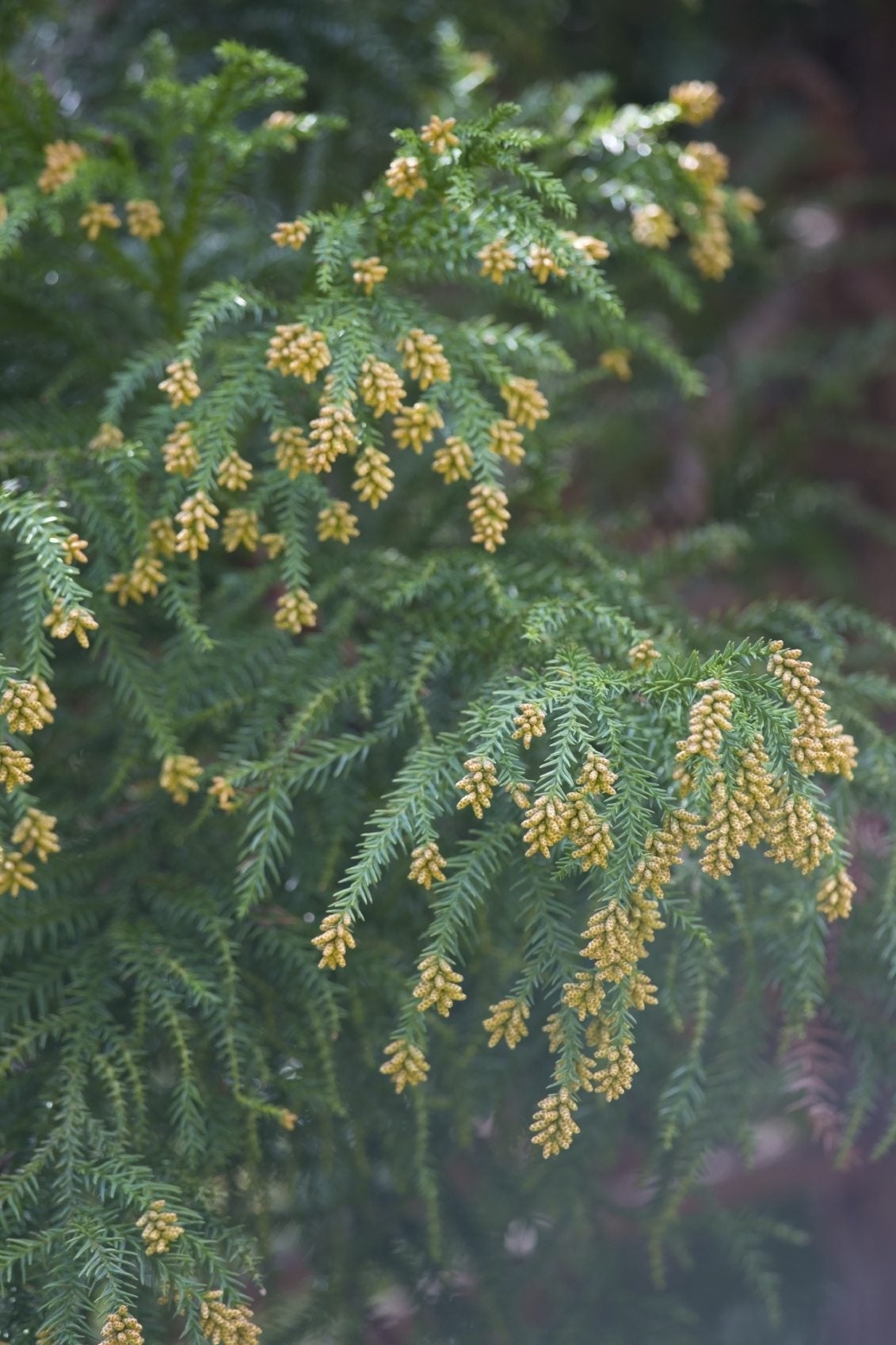Japanese Cedar Tree Facts – How To Care For Japanese Cedar


Japanese cedar trees (Cryptomeria japonica) are lovely evergreens that become more splendid as they mature. When they are young, they grow in an attractive pyramid shape, but as they grow older, their crowns open further to form a narrow oval. The trunk is straight and tapered with spreading branches that droop toward the ground as the tree develops. Read on for Japanese cedar tree facts including how to care for Japanese cedar.
Japanese Cedar Tree Facts
Japanese cedar trees have many ornamental features. Their short, shiny needles are an eye-catching shade of blue-green, arranged in spirals pointing toward the tip of the stems, like foxtails. The foliage bronzes in winter. The wood is fragrant, waterproof, light, and resilient. They can live over 600 years.
Japanese cedar facts include information about the mahogany-colored bark. It peels off in long strips, making the tree ornamental all year long.
When you are planting Japanese cedar, remember that the species tree can get to 80 or even 100 feet (24.5 to 30.5 m.) tall and 20 to 30 feet (6 to 9 m.) wide. Their size makes them excellent for windscreens, borders, and groupings on large properties. A single tree can also work on smaller properties because of its relatively narrow canopy and slow rate of growth.
Planting Japanese Cedar
When you are planting Japanese cedar, select a site that offers moist, acidic, well-drained soil. Ideally, Japanese cedar trees prefer full sun locations, but they also tolerate partial shade. Choose a location with has some air circulation to combat diseases like leaf blight, but don’t pick a site that is exposed to strong winds.
Japanese Cedar Tree Care and Pruning
If you are wondering how to care for Japanese cedar, it isn’t difficult. You’ll want to water your Japanese cedar in dry weather. Irrigation is important to keep them alive and looking their best during drought.
You can prune off any dead or broken branches to keep the tree’s shape attractive but, otherwise, annual pruning is not required for the health or structure of the tree.
Sign up for the Gardening Know How newsletter today and receive a free copy of our e-book "How to Grow Delicious Tomatoes".
If your yard is small, don’t plan on pruning Japanese cedar to make a tall tree work in a small space. Instead, plant a dwarf cultivar like ‘Globosa Nana,' a compact tree that grows up to 4 feet (1 m.) tall and 3 feet (1 m.) wide.

Teo Spengler is a master gardener and a docent at the San Francisco Botanical Garden, where she hosts public tours. She has studied horticulture and written about nature, trees, plants, and gardening for more than two decades, following a career as an attorney and legal writer. Her extended family includes some 30 houseplants and hundreds of outdoor plants, including 250 trees, which are her main passion. Spengler currently splits her life between San Francisco and the French Basque Country, though she was raised in Alaska, giving her experience of gardening in a range of climates.